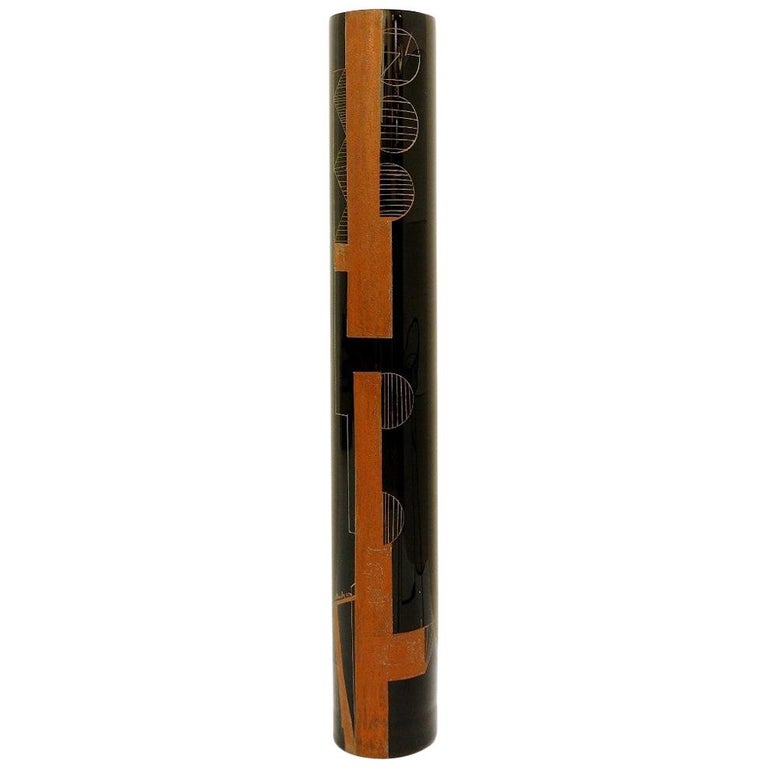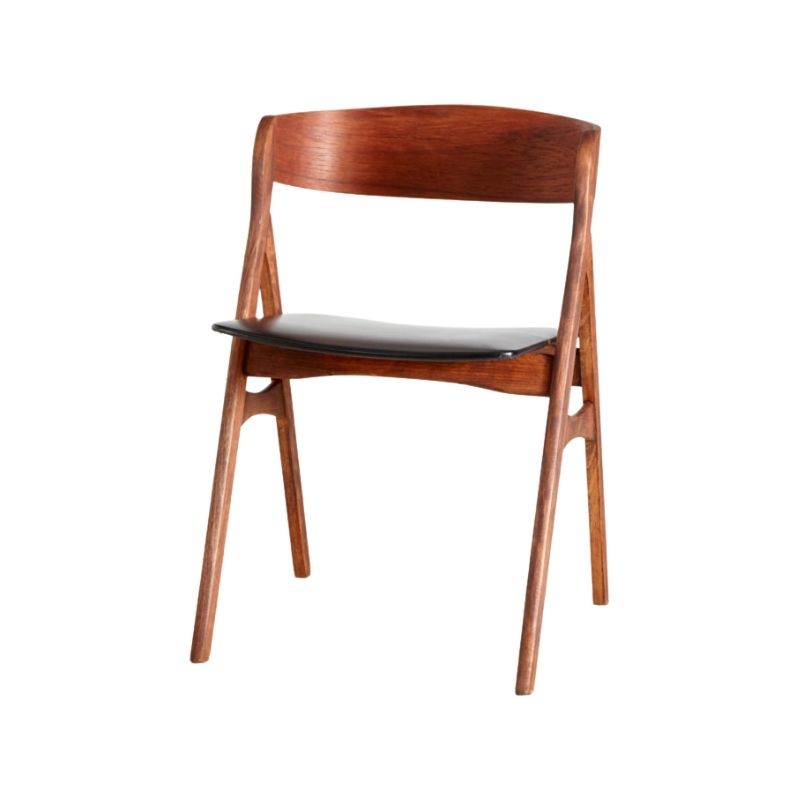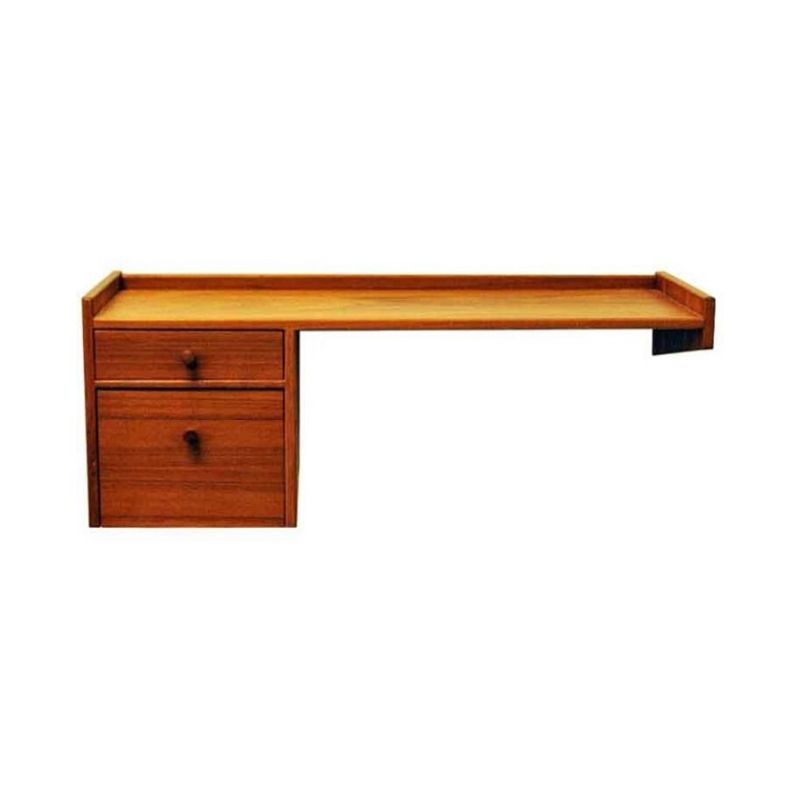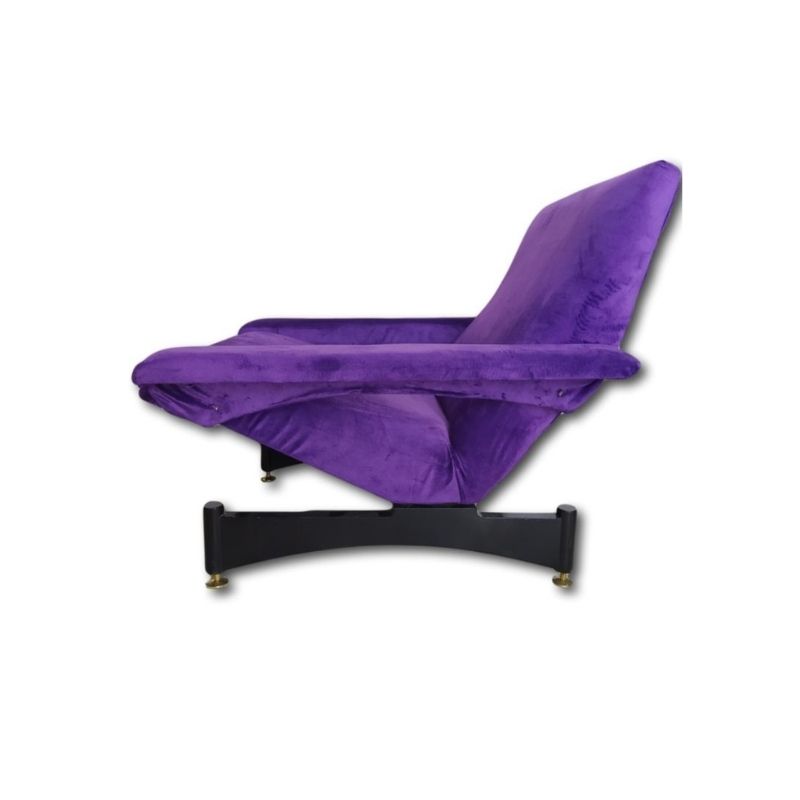I've been talking about this in another thread but due to the ubiquitous nature of the chair, I think this discussion needs its own thread.
I've called the Eames lounge fugly but maybe that's a bit far. I guess it looks kinda cool, all that baseball glove type thing it has going on. If any of you guys want to deliver me a vintage one with beautiful Brazilian Rosewood veneers and lovely leather patina for free, then I'll hardly send you packing. But it's not AMAZING looking, and it doesn't even tilt back. Not only that:
It was used in House, Frasier and pretty much everything else. Any trendy furniture retailer will incorporate this chair into their brochure, publicity material and even into their logo!
It's the archetypal cool chair that boring accountants buy with their first bonus when they want into the trendy lifestyle that they've read about in a magazine on the way to work. It's the centrepiece in the lounge for the man who has done nothing individual or daring in his entire life and thus has the cash to buy an exorbitantly priced chair out of a catalogue.
I was discussing this with a friend, who actually said that in owning an Eames Lounge, there is no better way to come across as at least one of the following:
A) a total n00b
B) absolutely unoriginal
C) more money than knowledge or sensibility
D Catalogue consumer
E) pay far more for a midcentury lounge chair than anyone else
F) Fail
People buy it as much because they want to associate themselves with design 'icons' in the permanent collection of Moma, and purchase themselves into a social milieu, as for the look and the comfort. One could say this about all bespoke design, but I guess that to try and buy oneself into a social milieu with one of the most obvious designs around is a rather underwhelming way to do it.
Not only that, does anybody actually think about the institutionalisation of style? It's a self-perpetuating thing; perhaps Eames got more lucky with a few of the right people in high places at the right time than other leading designers, so his design is perpetuated and reproduced and publicised ad infinitum, til the end of time... even though there were equally incredible lounge chairs that deserved to be perpetuated, but aren't and now 50 yrs later don't have the brand (I'm sat in one right now!)
Now, anticipating the calls of "blasphemy!" and pre-empting personal attacks from keyboard warriors, I confess, I am hardly an expert, my tastes are fairly green and perhaps have some evolution to undergo; but that's not the point. I don't want to talk down to anybody here, and this thread is not about personal glorification. Rather, I intend to stimulate discussion about this omnipresent chair. So in that spirit, let's discuss.
Lit Up
"I confess, I am hardly an expert, my tastes are fairly green and still have some evolution to undergo."
15 years ago, I probably would have had the same view as you. But as my love for design grew, so did my knowledge, and so did my appreciation for the hard work that it took to design such great things. And so did my realization of how much little work it was to just copy a design, and make money off it, in the guise of providing some type of philanthropic service to the poor.
You don't need to be wealthy to own an Eames Lounger. If you are smart, patient and persistent, you can find one at your price point. I found one at the Goodwill for $40, with ottoman.
Lit Up, trust me. The more your knowledge grows about the history of these designs and these designers, the more you will come to appreciate original works. And you will care less about trends, less about what chair is on what TV show, or whatever.
To everyone else on the forum: rather than instinctively bash him (it's hard I know), let's help him learn.
There is a reason these...
There is a reason these design icons become icons. I think the Eames Lounge Chair is amazing. That said, I have to agree that in the last decade or so these iconic pieces have become so ubiquitous, I really got turned off to them. I like to feel like I'm expressing my own personality in my design choices, and I don't feel like I can do that with Bertoia chairs, etc. I don't love them any less, but I don't want to own them. I only buy antique pieces now that are more obscure and have not been in continuous production or reissued. But I wouldn't judge other people's tastes or choices.
I think it's a pity to let...
I think it's a pity to let others decide your purchase. I don't care how many people own an Eames lounge chair, or how many want one. I find it handsome and comfortable ... my only two units of measure for a successful chair. The world's measure (popularity and iconic stature) should be meaningless to the discerning design addict.
You'll also find that the more you learn and look at you actually don't want everything to look "amazing." I know after years of looking at iconic furniture, I noticed many pieces struggle to be the focal point. The lovely thing about this chair is that it is one icon that doesn't. It' aesthetically humble. A far cry from the Bertoia bird chair or the Jacobsen swan (both of which I still love for other reasons). Got mine for around $600. Not $40, but not bad!!
Another interesting thing about this chair, and perhaps one reason it is so universal, it that it looks beautiful with almost any type of architecture or interior (given that said interiors match in quality, not necessarily in style). Quite a few pieces look good in contrast to other styles, but this one doesn't seem to contrast as much as it tends to blend. I've seen 'em in a library full of dusty books, chandeliers, and antiques to a great result.
I think eventually you'll find comfort in it's familiarity & subtlety.
There are other reasons I sought this chair as well:
1. It swivels. Few lounges do. This was important to me given my particular room layout.
2. It looks best in leather. A lounge is quite a large purchase. Because I am not wealthy I wanted one that would look better with age, rather than worse ... which fabric tends to do. Especially being that I have a kid and pets. Leather is tough looks great beaten.
3. Wood. Not a whole lot of lounges have exposed wood. I live in a white concrete box. Thus, I buy lots of wooden furniture to warm it up.
4. I bought a design process not a chair. As popular as Mr. Eames is, there is no denying the couple's amazing enthusiasm for life and design. I like it. It's a daily reminder.
Classics don't bother me. I have quite a few. I think it's the things around them (or lack thereof) and the environment in which they are displayed that makes them tired. It's like being a graphic designer .... I don't take my own photos, or design my fonts, or create colors that never existed .... it's all in how it is displayed.
Perhaps a 670 looks trite in a white room next to a Knoll sofa with a Mondrian poster overhead ... but replace the Mondrian with an old portrait in an ornate frame, add folksy textiles, perhaps some humble knick knacks, family photos, a quilt folded up on the ottoman et al and you might have something...
Envy is a nasty cologne
I rather like the Eames Lounge, especially the one that is redone by Hella Jongerius, which is priced even steeper:
I still can't afford it, and probably never will.
Faya
http://www.design-meubels.net/product/2/766/Lounge-Chair.html
There is so much incredible...
There is so much incredible mid century design that remains fairly obscure, and the sense of discovery and having something that isn't in every magazine and TV show makes it a lot of fun to collect. I would encourage anybody to look beyond the stuff in current production. But if folks wants an Eames lounge chair, fine -- I don't knock it and I don't think it's a "pity". To each his own.
I guess this means...
you DON'T drive a BMW 3-series then.
I agree with whitespike's point of "buying" a design process or even LANGUAGE than necessarily a chair, the culmination of both just so happen to produce a beautiful and comfy chair.
One of my favorite aspects of this chair lies in its dimensions. Its Height, Width, and Depth are all equal yet visually it looks reclined. That irony strikes me as really cool. As far as it NOT TILTING, well, if I need to recline further than the chair does naturally, then it's time for bed anyway.
I guess one could say the very same things about a Rolex watch
the badge of the nouveaux riche.However,I'd prefer a vintage a Bubble Back model,not the ubiquitous,glitzy models made today (which cost even more than an Eames Lounge chair!)Anyhow,I think the average noob would prefer a puffy Natuzzi leather couch and an hdtv rather than an Eames lounger.Nontheless,I appreciate the intrinsic workmanship,functionality and good design inherent in the 670.
In my mind, buying a Eames Lo...
In my mind, buying a Eames Lounge chair is "easy". Easy because it is so iconic...so universally recognized as "modern design". Its easy, like putting a Saarinen tulip table and chairs in your kitchen. Don't get me wrong, I admire these designs. That said, I prefer to make more "challenging" purchases. Re-reading what I have just written, I realize I sound like an elitist douchebag, but its honestly the way I feel. On most occasions, I'd rather have a hard to find, beautiful piece of furniture by a lesser known designer, than an iconic piece that Joe the modern guy can buy at DWR. I feel like we've had this conversation before, no?
Rather
than speaking of what the Eames Lounger isn't, it might be useful to define what it is. One reader suggests that the design is not "amazing," while another claims that it is just that.
What it is about the design that might have appealed to those "in the know" about design, when the chair was new -- and perhaps forever since ?
Well, it has primarily to do with the forms, of course. The lounger and its companion footstool are composed of repeated elements, carefully "articulated" -- that is, separated into their component parts, clearly and cleanly presented, as though the seat, the lower backrest, the upper backrest, and the arm rests had descended from the parts bins and neatly arranged themselves (upon the necessary metal base and rear brackets) in the form of a comfortable and welcoming seat. Each of these elements is a whole unto itself -- with the telling coda of the footstool repeating the primary seat element, reinforcing the suggestion that the parts were available to the designer (ready-made by some superior Designer ?), just awaiting selection and assembly. Further, the two back-rests are as much like the seat element as is possible, considering the necessary dimensional constraints.
This clean, clear, modular form of design is an essential keynote of modernism. Here, though, it has passed beyond strict functionalism and into a more expressionist mode; the materials are warm and human, and the forms are modified where they crucially intersect, so that the totality is greater than the sum of its parts. That is, the way the lower backrest and the arms are configured, and how they connect to the seat, makes an integrated whole while still clearly articulating the separate elements. The result is two things at once, co-existing: individual parts, and a cohesive whole.
Rendered in warm wood and soft-looking leather, both contrasting nicely with the simple but not anonymous metal base, gives the whole affair a luxury that itself contrasts with the quasi-functionalist form-making already described. It is these dualities, along with the self-confidence of the formal language (consistency of radii, simple but expressive geometries in rich juxtaposition) that makes the design a success -- I believe.
As to its iconic status, and its perhaps clichéd use, a half-century on, I would suggest that these are perhaps partly a matter of chance, and partly the result of its complete success as a design solution, for the reasons given above. It should be a matter of some wonder that, in this day of ever-accelerating rates of change and evolution in every field, a few such design objects have, literally, stood the test of time. The Eames Lounge Chair is one such object, and deserves our respect and even our praise -- whether its to your taste or not. Clichés are usually found in that category for good reason. . .
Pearls before swine
"A plycraft Eames copy [...] can tilt AND produce something for the legs. I prefer this additional functional element, to what was to begin with merely a fugly and overrated Eames design."
http://www.designaddict.com/design_addict/forums/index.cfm/fuseaction/th...
I have been taught academical...
I have been taught academically and professionally trained to be a designer (architect) but for the life of me everytime i see an eames lounge chair sold for $3k i just rolled my eyes, it's ridiculous price for pieces of plywood and leathers ,eventually i found out why, it's because i can only afford a plycraft. but when i finally found an original eames lounge chair that i can afford, i say to myself each time i sit on it, "i know what they mean."
Perhaps,
on reflection, despite the generous praise I lavished on the chair (above), 50+ years have taken their toll on our senses, and we can no longer see with fresh eyes the attributes which brought this piece its initial fame. In other words, we have become jaded, and (frankly) bored by it ?
Or is that only the result (for me) of my own age and consequent long exposure to the design. . .?
I assure you I'm bored by the Barcelona Chair. But not, as yet, by the DCW/LCW !
If you need any help, please contact us at – info@designaddict.com










